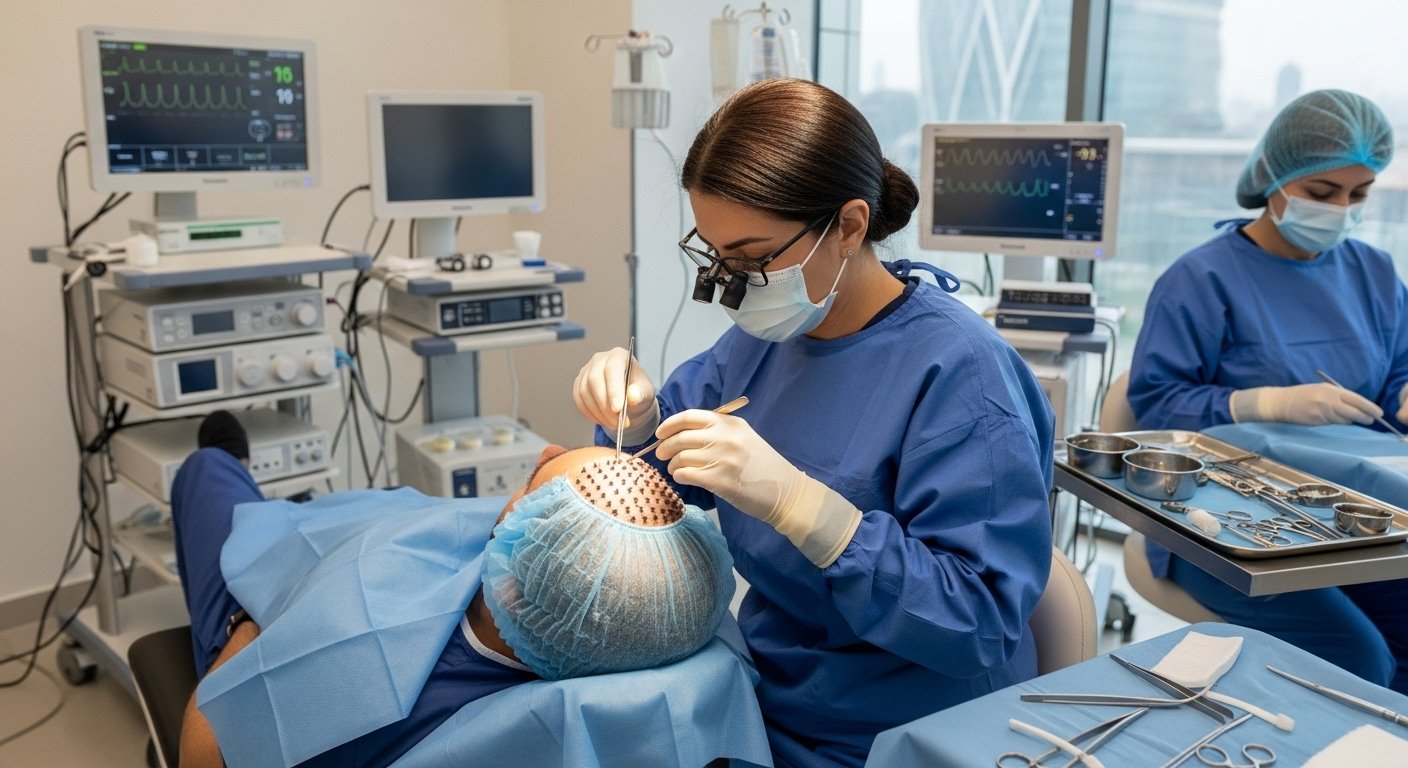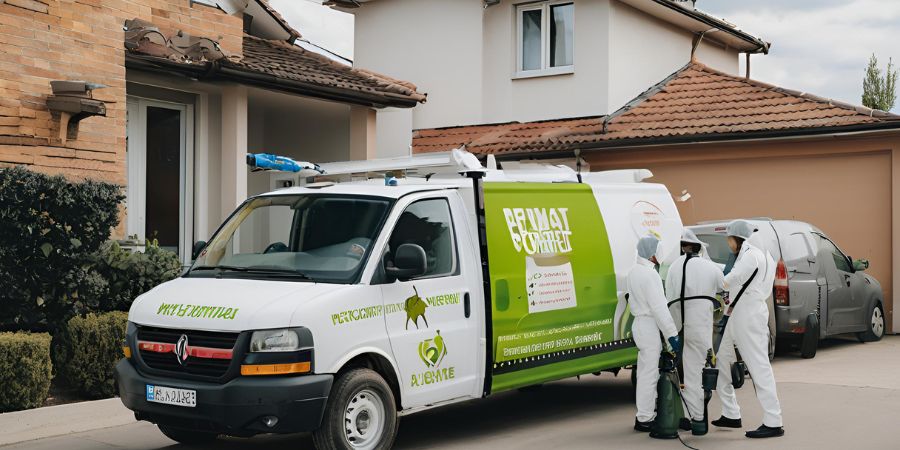
When considering a hair transplant, Turkey has emerged as the world’s leading destination, performing over 1.5 million procedures annually and capturing approximately 35% of the global hair restoration market. But what makes Turkey’s pricing so competitive, and more importantly, what should you expect to pay in 2025?
The average cost of a hair transplant in Turkey ranges from $1,500 to $6,000, representing savings of 60-70% compared to Western countries. This comprehensive guide breaks down everything you need to know about hair transplant costs in Turkey, from technique-specific pricing to hidden factors that affect your final bill.
Understanding Hair Transplant Pricing in Turkey
Unlike Western clinics that charge per graft ($3-$15 per follicle), Turkish clinics typically offer all-inclusive packages that cover the entire treatment journey. These packages include the surgical procedure, hotel accommodation, airport transfers, medications, post-operative care kits, and follow-up consultations.
Typical Price Ranges by Technique (2025)
The cost varies significantly based on which hair restoration method you choose:
FUE (Follicular Unit Extraction): $2,000-$4,500 for 3,000-4,000 grafts
DHI (Direct Hair Implantation): $2,500-$5,500 for similar graft counts
Sapphire FUE: $2,050-$3,500, offering faster healing with precision sapphire blades
Manual FUE: $3,500-$6,900 for highly customized procedures
Premium clinics like Hermest Hair Clinic structure their 2025 packages transparently, with Sapphire FUE Lite starting at $3,350 for up to 4,000 grafts, DHI Lite at $4,050, and their exclusive UNIQUE FUE method at $4,950. Budget-friendly options begin as low as $1,500 for basic procedures at reputable clinics.
What’s Included in All-Inclusive Turkish Hair Transplant Packages?
The comprehensive nature of Turkish packages explains much of their value proposition. Standard all-inclusive packages typically cover:
Medical Services: Pre-operative consultation with the surgeon, local anesthesia, the complete hair transplant procedure (FUE, DHI, or Sapphire method), unlimited grafts or up to a specified maximum (commonly 4,000-5,000), post-operative medications and pain management
Accommodation & Logistics: 2-4 nights in 4-star or 5-star hotels with breakfast, VIP airport transfers (arrival and departure), hospital-hotel-airport transportation, English-speaking patient coordinator throughout your stay
Aftercare Support: Post-operative care kit (specialized shampoo, lotion, medications), detailed recovery instructions, 12-18 months of online follow-up consultations, progress tracking through photo documentation
This bundled approach eliminates unexpected costs and simplifies the medical tourism experience. Clinics like Smile Hair Clinic and Vera Clinic have perfected this model, with packages ranging from $1,950 to $4,860 depending on the technique and service level.
Why Are Hair Transplants Significantly Cheaper in Turkey?
The dramatic price difference between Turkey and Western countries stems from five fundamental economic factors:
Favorable Currency Exchange: The Turkish lira’s exchange rate against the dollar, euro, and pound creates inherent cost advantages for international patients. What represents a modest expense in lira translates to exceptional value in stronger currencies.
Lower Operational Costs: Turkey’s cost of living remains substantially lower than Europe or North America. This extends to clinic rent, staff salaries (Turkish surgeon salaries average $17,000-$30,000 annually versus $150,000+ in the US), medical supplies, and administrative expenses.
Government Incentives: The Turkish government actively supports medical tourism through specialized regulations, tax incentives, and international accreditation programs designed to attract foreign patients.
High-Volume Business Model: Turkish clinics perform exceptional numbers of procedures. Leading surgeons complete 500+ hair transplants annually compared to fewer than 100 for many Western counterparts. This volume creates economies of scale that reduce per-procedure costs while simultaneously building unmatched expertise.
Intense Market Competition: With over 500 hair transplant clinics in Istanbul alone, fierce competition drives prices down while simultaneously pushing quality standards up.
Importantly, these lower costs do not indicate compromised quality. Top Turkish clinics maintain success rates between 90-98%, matching or exceeding international standards.
Hair Transplant Cost: Turkey vs USA vs UK vs Europe
The price differential becomes starkest when examining direct comparisons:
Turkey averages $2,500-$6,000 for comprehensive all-inclusive packages covering 3,000-4,000 grafts. The United States charges $12,000-$35,000 for FUE procedures, with DHI reaching $14,000-$45,000, typically excluding accommodation, travel, or extended aftercare. The United Kingdom prices range from $5,800-$15,000 (£4,520-£11,700), with limited package options and per-graft billing of $4-$6 (£3.12-£4.68). European countries span $4,000-$13,000, with Germany and France at the higher end of this spectrum.
For American or British patients, the total cost in Turkey—including flights, accommodation, and the procedure—often remains lower than just the surgical fee alone in their home country. A UK patient spending £2,500 in Turkey saves approximately £6,500 compared to a £9,000 domestic procedure, even after accounting for travel expenses.
Breakdown by Number of Grafts
Turkish clinics structure pricing around graft count, though many offer unlimited grafts within package limits:
2,000 grafts: $1,500-$2,500 (FUE), $2,000-$3,500 (DHI)
3,000 grafts: $1,890-$2,750 across different techniques
4,000 grafts: $2,300-$3,700, the most common package size
5,000 grafts: $2,500-$4,100, for extensive coverage
6,000+ grafts: $2,500-$4,500, though some clinics include unlimited grafts
The cost per graft in Turkey ranges from $0.50-$1.50, dramatically lower than the $3-$15 per graft charged in Western countries. This per-graft efficiency makes Turkey especially attractive for patients requiring extensive restoration.
Top Turkish Clinics and Their 2025 Pricing
Vera Clinic leads reputation rankings with over 30,000 patients since 2013. Their Sapphire FUE packages start at £2,490 ($3,300), DHI at £2,890 ($3,750), and their New Generation Hair Transplant at £4,890 ($6,300). With a 4.8-star rating from 1,440 Google reviews, Vera Clinic exemplifies quality at competitive prices.
Hermest Hair Clinic offers transparent 2025 pricing: Sapphire FUE Lite at $3,350, DHI Lite at $4,050, Premium packages with stem cell therapy for an additional $1,350, and their proprietary UNIQUE FUE method at $4,950. All packages cover up to 4,000 grafts with comprehensive support.
Hayatmed Clinic provides entry-level accessibility with packages starting at $1,950 for 2,500 grafts, scaling to $3,850 for 5,000 grafts with DHI. Their transparent per-graft pricing ($0.40-$0.45) removes uncertainty from the budgeting process.
Smile Hair Clinic structures offerings around experience levels: Platinum packages at £2,790 ($3,600) and Diamond packages at £4,860 ($6,300). Featured on BBC News and The Good Men Project, Smile Hair Clinic maintains a 4.9-star rating from 1,362 Google reviews.
Dr. Serkan Aygin Clinic ranges from $2,500-$8,000 depending on technique (DHI vs. FUE). With international recognition and decades of experience, Dr. Aygin’s clinic represents the premium tier of Turkish hair restoration.
Hidden Costs and Additional Expenses to Consider
While Turkish packages are comprehensive, certain elements remain separate:
Always Your Responsibility: International airfare (typically $300-$800 from Europe, $500-$1,200 from North America), travel insurance and medical tourism insurance ($50-$150), meals beyond hotel breakfast, personal expenses and sightseeing, visa fees where applicable (e-visa $50 for many nationalities)
Potentially Extra at Some Clinics: Grafts exceeding package limits (additional $0.40-$1.50 per graft), advanced treatments like PRP therapy, exosome therapy, or stem cell treatment (add $500-$2,000), extended hotel stays beyond the standard 3-4 nights ($50-$200 per night), translator services for languages beyond English, Turkish, and Arabic
Revision Procedures: In rare cases where results don’t meet expectations, revision procedures may incur additional costs. However, reputable clinics often include guarantees or complimentary touch-ups within their original package terms.
The most transparent clinics, like Hermest and Hayatmed, explicitly detail what’s included and excluded, ensuring no surprise charges appear during or after your procedure.
Success Rates and Quality Considerations
Lower cost does not equal lower quality in Turkey’s case. Top Turkish clinics report success rates of 90-98%, comparable to or exceeding Western standards. Several factors drive these impressive outcomes:
Surgeon Experience: Turkish surgeons perform 500+ procedures annually versus 100 or fewer for many Western counterparts. This extraordinary volume creates exceptional skill refinement.
Advanced Techniques: Turkish clinics pioneered and perfected methods like Sapphire FUE and multi-DHI implantation. Many innovations in hair restoration originated in Turkish clinics.
International Accreditation: Leading clinics maintain JCI (Joint Commission International) accreditation and TEMOS certification, ensuring compliance with rigorous international medical standards.
Transparent Results: Reputable clinics maintain extensive before-and-after galleries with thousands of documented cases, allowing prospective patients to verify actual results.
However, the volume-driven model does carry risks. Some clinics prioritize quantity over quality, employing technicians instead of surgeons or performing mega-sessions that compromise graft survival. This underscores the critical importance of thorough clinic research.
Potential Risks and Considerations
Medical tourism for hair transplants carries inherent challenges that prospective patients must understand:
Quality Variation: With over 500 clinics in Istanbul alone, quality varies dramatically. Some clinics employ unlicensed technicians instead of board-certified surgeons, creating safety and outcome risks.
Mega-Session Complications: Aggressive procedures transplanting 6,000+ grafts in single sessions increase risks of excessive blood loss, lidocaine toxicity, poor graft survival due to inadequate blood supply, unnatural density causing “pluggy” appearance, and over-harvesting the donor area.
Limited Follow-Up Care: After returning home, accessing post-operative care becomes challenging. Most US-based surgeons hesitate to treat complications from procedures performed elsewhere, potentially leaving patients without local medical support.
Variable Regulation: While top Turkish clinics maintain international standards, regulatory oversight differs from Western countries. Medical malpractice recourse may be limited, and language barriers can complicate communication if problems arise.
Poor Aesthetic Outcomes: Some clinics lack artistic expertise in hairline design, resulting in unnaturally straight hairlines, the “cap effect” (hairline without temporal recession), incorrect graft angles creating abnormal growth directions, and overly feminine hairlines for male patients.
These risks emphasize the paramount importance of selecting accredited, highly-reviewed clinics with experienced, licensed surgeons rather than choosing based solely on the lowest price.
How to Choose the Right Turkish Hair Transplant Clinic
Protecting yourself from substandard care requires systematic clinic evaluation:
Verify Surgeon Credentials: Confirm board certification in dermatology or plastic surgery, membership in ISHRS (International Society of Hair Restoration Surgery) or similar professional bodies, and documented experience performing hundreds or thousands of procedures. Ensure the surgeon—not technicians—performs the critical extraction and implantation phases.
Research Clinic Accreditation: Look for JCI accreditation, TEMOS certification, Turkish Ministry of Health licensing, and ISO certification for facility standards. These credentials verify compliance with international safety and quality benchmarks.
Examine Before-and-After Galleries: Review extensive photo galleries showing patients with similar hair types, loss patterns, and ethnic backgrounds. Scrutinize naturalness of hairlines, appropriate density, and consistent quality across multiple cases.
Read Independent Reviews: Beyond clinic websites, research reviews on Trustpilot, RealSelf, Reddit hair transplant forums, and Google Reviews. Look for patterns in feedback regarding communication, results, aftercare support, and handling of complications.
Schedule Video Consultations: Reputable clinics offer free video consultations where you can discuss your specific case, ask about technique recommendations, clarify exactly what’s included in package pricing, and assess the surgeon’s communication style and professionalism.
Understand Their Approach: Premium clinics like Hermest conduct thorough assessments of donor area quality, discuss realistic expectations, customize hairline design to facial structure, and provide detailed recovery protocols. Avoid clinics making unrealistic promises or pushing for immediate decisions.
What to Expect: The Hair Transplant Process in Turkey
Understanding the complete journey helps set realistic expectations:
Pre-Procedure (Days 1-2): Arrival at Istanbul airport with VIP transfer to hotel, initial consultation with surgeon for assessment and hairline design, medical evaluation and final graft count determination, pre-operative instructions and questions addressed
Surgery Day (6-8 hours): Morning pickup from hotel to clinic, final hairline marking and patient approval, local anesthesia administration (increasingly using needle-free spray methods), graft extraction from donor area, preservation in specialized solutions, lunch break, recipient area channel opening, meticulous graft implantation, post-operative bandaging and instructions
Recovery Period (Days 3-4): First hair wash at clinic (critical for proper healing), removal of bandages, final check-up with surgeon, aftercare product provision, return flights home
Growth Timeline: The hair transplant recovery and growth follows a predictable pattern:
Days 1-7 represent the critical healing phase with tenderness, swelling, and scab formation. Days 7-14 see scabs naturally falling off and initial healing completion. Weeks 2-8 bring shock loss where transplanted hairs shed (completely normal and expected). Months 3-4 mark the beginning of new hair growth, initially fine and thin. Months 5-9 show the biggest improvement phase with rapid growth and increasing thickness. Month 12 delivers approximately 90% of final results with natural appearance. Months 12-15 bring full maturity with maximum density and thickness achieved.
Insurance and Payment Options
Hair transplants are rarely covered by insurance in any country, as they’re classified as elective cosmetic procedures. However, exceptions exist for hair loss caused by medical conditions (burns, accidents, alopecia areata resulting from illness), gender-affirming procedures (with proper documentation), or reconstructive needs following trauma or surgery.
In Turkey, clinics don’t typically accept insurance, but the dramatically lower costs make procedures accessible without coverage. Many patients find that the total cost of flying to Turkey and getting the procedure still costs less than their insurance deductible would be in the US.
Payment Flexibility: Turkish clinics increasingly offer payment plans or installment options, cryptocurrency payment acceptance, and deposits to secure appointments with final payment on arrival. Some international medical financing companies now include Turkish procedures in their coverage.
Combining Treatment with Tourism
One unique advantage of choosing Turkey involves combining medical treatment with cultural exploration. Istanbul straddles Europe and Asia, offering rich history including the Hagia Sophia, Blue Mosque, Topkapi Palace, and Grand Bazaar, world-renowned cuisine, traditional Turkish baths (hammams), and Bosphorus cruises.
Many patients schedule extra days before or after their procedure to explore the city, effectively turning a medical necessity into a memorable vacation. Some clinics even partner with tour operators to provide guided sightseeing during recovery periods when physical activity is restricted.
Frequently Asked Questions
How much does a 3,000 graft hair transplant cost in Turkey?
A 3,000 graft procedure typically costs $1,890-$2,750 depending on the technique chosen. FUE methods occupy the lower end of this range, while DHI procedures cost slightly more due to the precision Choi implanter pen technique.
Are there hidden fees with Turkish hair transplant packages?
Reputable clinics like Hermest and Hayatmed offer completely transparent pricing with no hidden fees. The quoted package price includes surgery, accommodation, transfers, medications, and aftercare. You only pay separately for flights, meals beyond breakfast, and any optional add-ons like stem cell therapy.
How does Turkey maintain quality while keeping prices so low?
The combination of favorable currency exchange, lower operational costs, government support for medical tourism, high-volume efficiency, and intense competition allows Turkish clinics to offer exceptional value. Lower prices reflect economic factors, not compromised quality—top Turkish clinics maintain 90-98% success rates.
How long do I need to stay in Turkey for a hair transplant?
Most clinics recommend 3-4 days: arrival and consultation day one, surgery day two, first wash and check-up day three, and departure day four. Some patients extend their stay for additional sightseeing, while others minimize time with streamlined 3-day packages.
Final Recommendations
Turkey offers unparalleled value for hair transplantation, combining world-class expertise with prices 60–70% lower than Western alternatives. However, success depends entirely on clinic selection. Prioritize accredited clinics with experienced surgeons, transparent pricing, clear hair transplant Turkey cost details, comprehensive aftercare, and extensive verified patient reviews rather than simply choosing the cheapest option.
For most international patients, the total investment including flights typically ranges from $2,500–$5,500 — still representing massive savings compared to $10,000–$30,000 for equivalent procedures in the US or UK. This affordability makes hair restoration accessible to patients who might otherwise forego treatment due to high hair transplant Turkey cost barriers.


